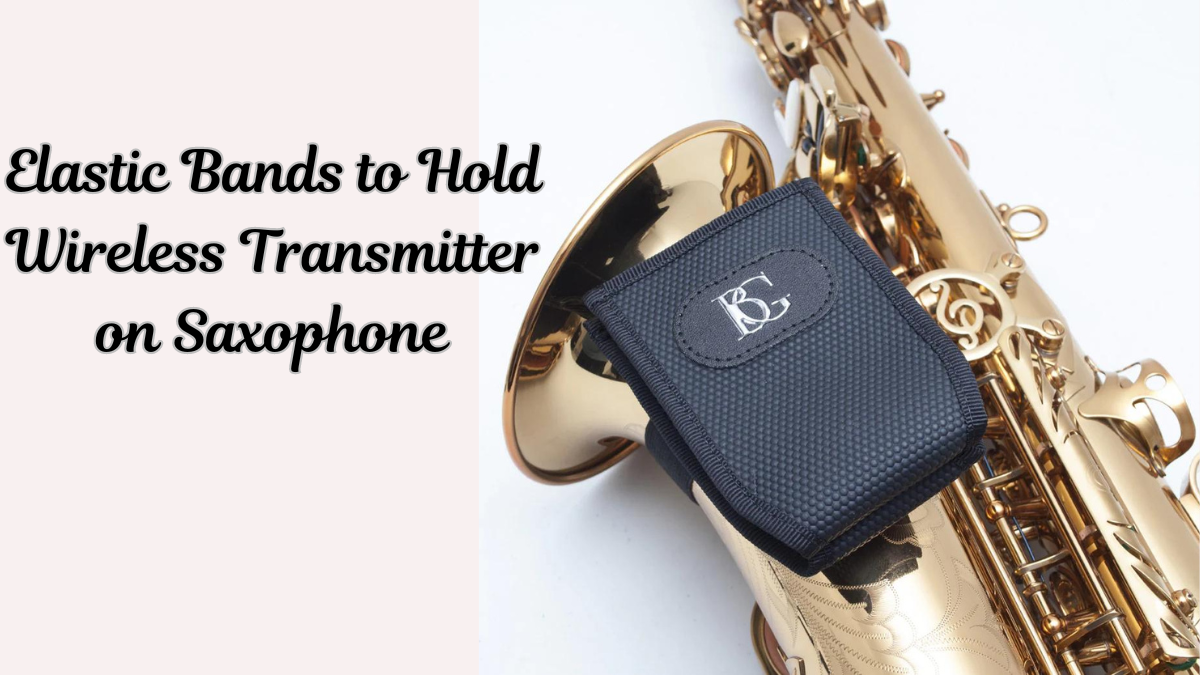Elastic Bands to Hold Wireless Transmitter on Saxophone: A Practical Guide
In the world of live performance, especially for saxophonists who want to maintain mobility while performing, using a wireless transmitter is a game-changer. However, finding a secure and convenient way to hold this equipment on your instrument can be a challenge. Elastic bands offer a simple yet effective solution to this problem. In this article, we’ll explore how elastic bands can be used to hold a wireless transmitter on a saxophone, providing you with a step-by-step guide and practical tips.
Why Use Elastic Bands for Your Wireless Transmitter?
Elastic bands might seem like a low-tech solution, but they offer several benefits for securing a wireless transmitter on a saxophone:
- Cost-Effective: Elastic bands are inexpensive and easily available, making them a budget-friendly option.
- Adjustable: They come in various sizes and strengths, allowing you to adjust the tension according to your needs.
- Easy to Apply: Using elastic bands requires minimal effort and tools, making it accessible for anyone.
- Flexible: They adapt well to different shapes and sizes, providing a secure fit without damaging your equipment.
Step-by-Step Guide to Using Elastic Bands on Your Saxophone
Here’s a straightforward guide to using elastic bands to secure your wireless transmitter on a saxophone:
Gather Your Materials
Before you start, you’ll need:
Elastic bands (choose a size that can comfortably stretch around your saxophone and transmitter)
Wireless transmitter
Saxophone
Scissors (optional, for trimming bands)
Choose the Right Elastic Bands
Select elastic bands that are strong enough to hold your transmitter securely but not too tight to cause damage. Rubber bands or fabric-covered elastic bands work well. Ensure they are of sufficient length to wrap around your transmitter and saxophone.
Position the Wireless Transmitter
Decide where you want to place the transmitter on your saxophone. Common locations include:
Near the Neck: Securing the transmitter near the neck of the saxophone allows easy access and keeps it close to the musician.
Body of the Saxophone: Placing the transmitter on the body, near the bell, can be more discreet.
Wrap the Elastic Bands
Place the Transmitter: Position the transmitter in your chosen spot.
Wrap the Bands: Stretch the elastic bands around the saxophone and transmitter. If using multiple bands, layer them for extra security.
Adjust Tension: Ensure the bands are tight enough to hold the transmitter but not so tight that they cause strain or damage.
Test the Setup
Once you’ve secured the transmitter, test it by moving around and playing your saxophone. Check if the transmitter stays in place and adjust the bands if necessary.
Trim Excess Bands
If the elastic bands are too long and sticking out, trim the excess with scissors to prevent them from interfering with your playing.
Advantages of Using Elastic Bands Over Other Methods
Elastic bands have distinct advantages over more complex solutions for securing your wireless transmitter:
- Simplicity: No need for specialized mounting hardware or tools.
- Versatility: Easily adaptable to different types of saxophones and transmitters.
- Portability: Elastic bands are small and easy to carry, making them a practical solution for on-the-go musicians.
Additional Tips for Securing Your Wireless Transmitter
- Use Multiple Bands: For added security, use more than one elastic band. This prevents the transmitter from shifting during performance.
- Check Regularly: Periodically check the bands during your performance to ensure they haven’t loosened.
- Avoid Overstretching: Overstretching the bands can reduce their lifespan and effectiveness. Choose bands with the right amount of elasticity.
Maintaining Your Elastic Bands
Elastic bands can wear out over time. To ensure they remain effective:
- Inspect Regularly: Look for signs of wear or breakage.
- Replace as Needed: Keep spare elastic bands on hand to replace any that become damaged.
Alternatives to Elastic Bands
If you’re looking for alternatives to elastic bands, consider the following options:
- Velcro Straps: Adjustable and secure, Velcro straps offer a more robust solution.
- Custom Mounts: For a more permanent solution, custom mounts designed specifically for your transmitter and saxophone can be used.
Conclusion
Using elastic bands to hold a wireless transmitter on a saxophone is a practical, cost-effective solution that offers flexibility and ease of use. By following the steps outlined in this guide, you can securely attach your transmitter and enjoy greater freedom of movement while performing. Elastic bands, while simple, can be highly effective in ensuring that your equipment remains in place and you can focus on delivering a stellar performance.
FAQs
Can I use any type of elastic band for this purpose?
Yes, but it’s best to use bands that are strong enough to hold the transmitter securely without causing damage.
How often should I check the bands during a performance?
Regularly check the bands to ensure they haven’t loosened, especially during active performances.
What if the bands cause damage to my saxophone?
Ensure the bands are not too tight and regularly inspect for any signs of damage. If you notice issues, adjust the tension or consider alternative mounting methods.
Can I use elastic bands for other types of equipment?
Yes, elastic bands can be used for securing various types of equipment, provided they are suitable for the size and weight of the item.
Where can I buy elastic bands suitable for this purpose?
Elastic bands are available at office supply stores, craft stores, and online retailers. Choose bands that are durable and of appropriate size for your equipment.







